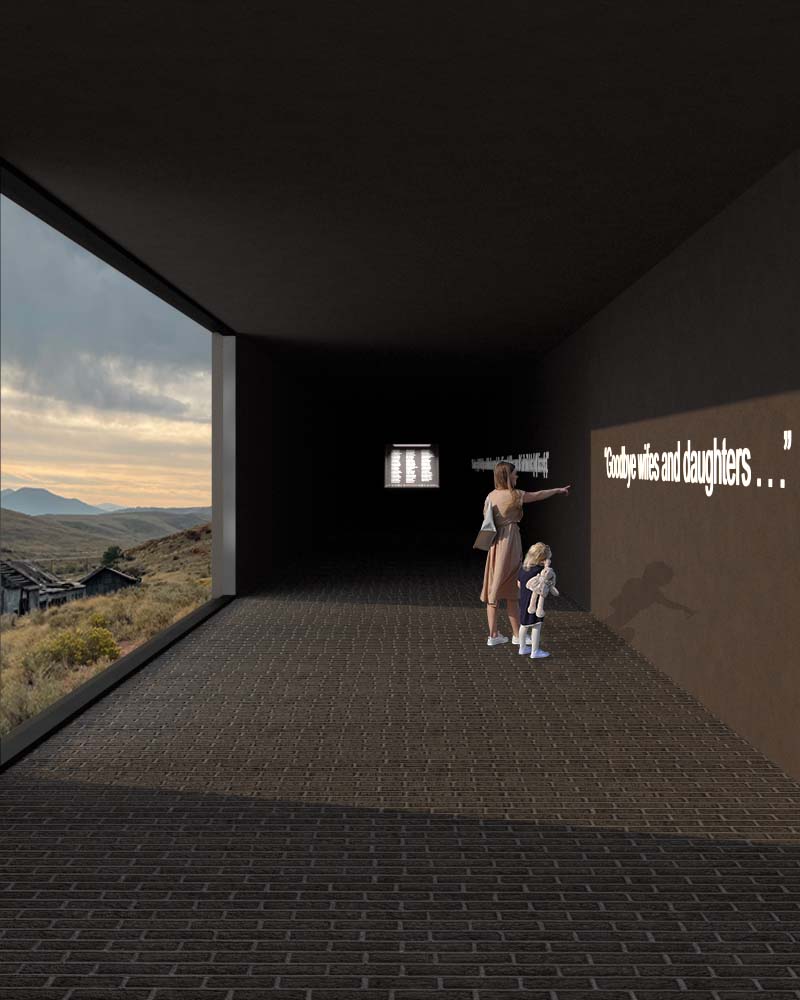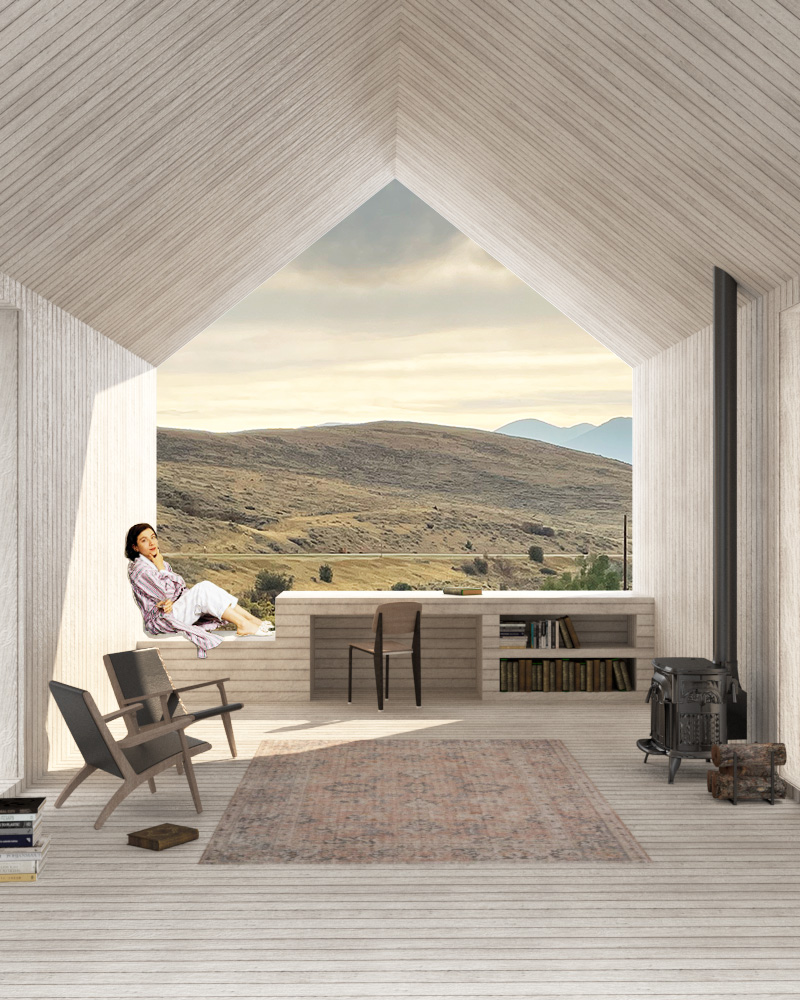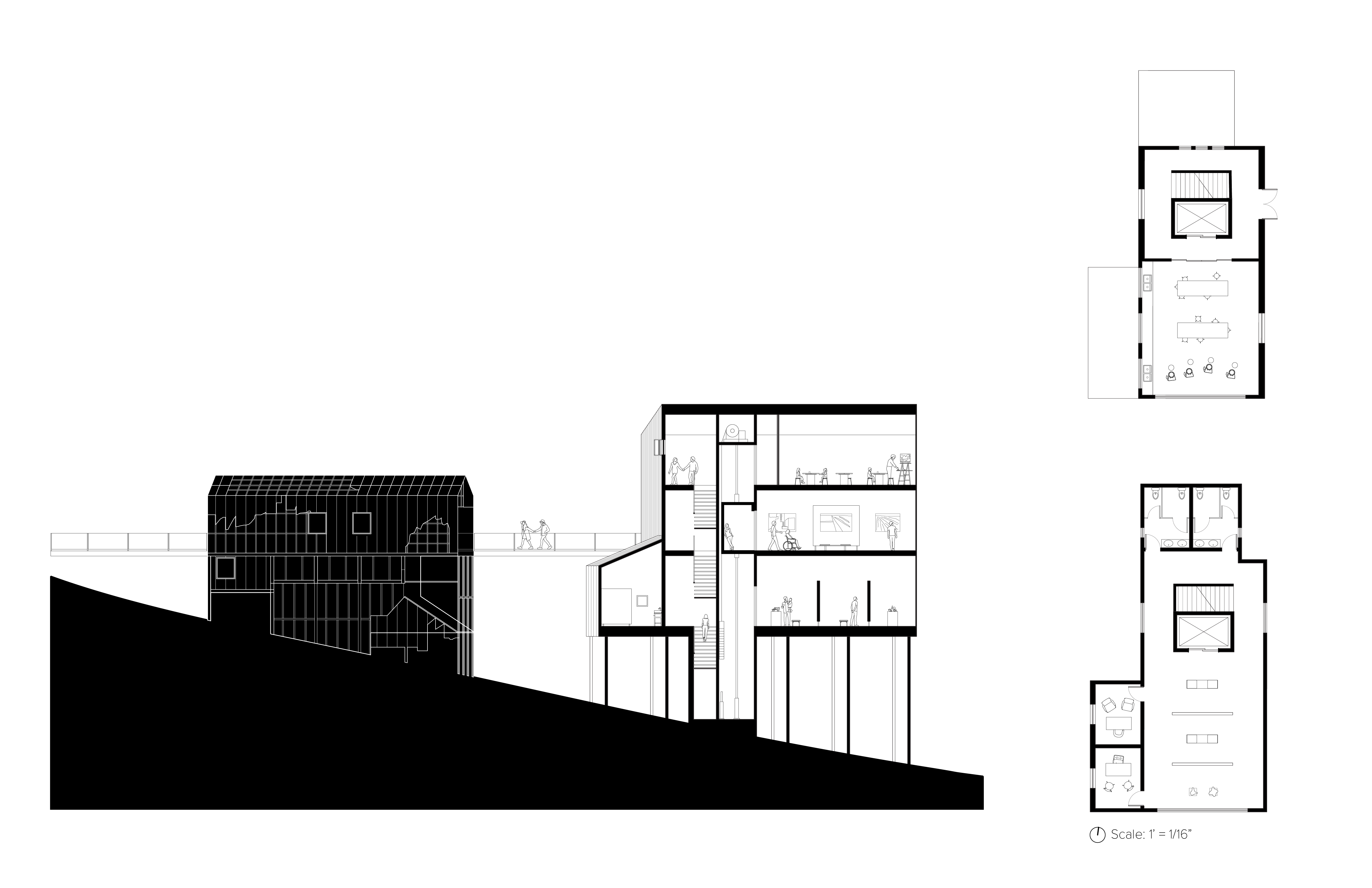Carbon County Center for the Arts
H.I. Feldman Nominee Advanced Design Studio with Todd Saunders and Timothy Newton
H.I. Feldman Nominee Advanced Design Studio with Todd Saunders and Timothy Newton
How can an institution instigate change?
In 1943, a mining explosion killed 74 coal miners at Smith Coal Mine in the town of Bearcreek, Montana. This disaster devastated the local economy and left families with an immense sense of loss. The town population has since decreased from 3,000 to 117 residents. The site of Smith Mining operations exists today in a state of ruins, but continues to be of palpable significance to the local community. The industrial ruins exist as a cultural artifact that converts the vast expanse of Montana’s landscape from a “space” to “place”. It provides an anchor to a landscape that is in a sense “other”.
In 1943, a mining explosion killed 74 coal miners at Smith Coal Mine in the town of Bearcreek, Montana. This disaster devastated the local economy and left families with an immense sense of loss. The town population has since decreased from 3,000 to 117 residents. The site of Smith Mining operations exists today in a state of ruins, but continues to be of palpable significance to the local community. The industrial ruins exist as a cultural artifact that converts the vast expanse of Montana’s landscape from a “space” to “place”. It provides an anchor to a landscape that is in a sense “other”.











The design of Carbon County Center for the Arts intends to provide a place for both visiting artists and community members to immerse themselves within the history and cultural memory of Carbon County while also encouraging individuals to consider the future. The art center would restore the community's access to this memory while simultaneously reviving the site and local economy.
Inspired by the character and form of the underground mine shaft, a long linear memorial dedicated to the victims of the explosion acts as a datum between artists' living space, making space and the mining ruins. A reflection pool at one end of the memorial allows community members and artists to contemplate mortality, the lives of those displaced by mining activities and the environmental implications of extraction on the landscape. Community spaces such as performance space, gallery and classrooms are built in the footprints of former buildings on site. New buildings are intentionally placed behind the crest of the hilltop, sensitively being respectful to the context of the ruins. As visitors leave, a view of Bearcreek is framed by the memorial terminus.








